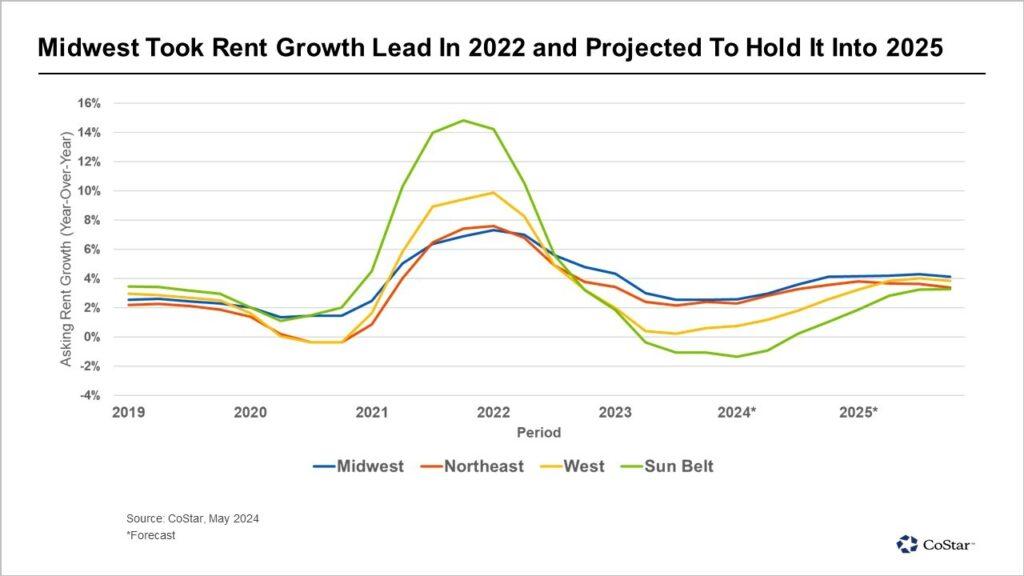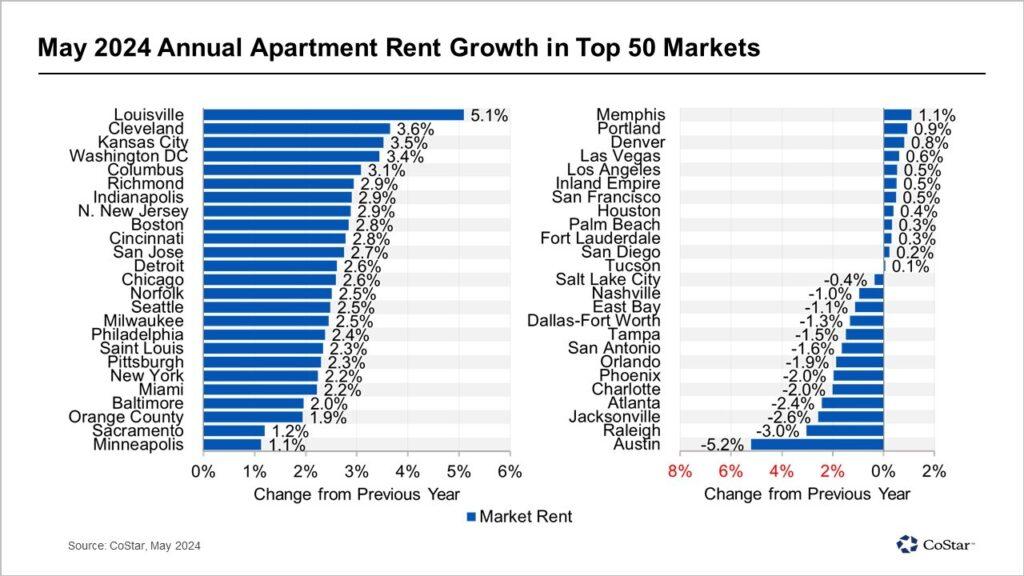It’s Here, Midwest Multifamily Rent Trends: The Eye-Opening Shift You Need to See Before 2025
Apartment Supply Overhang Keeps the Sun Belt Running Last While Midwest Multifamily Rent Trends Surge
Since late 2022, the Midwest multifamily rent trends have steadily climbed to a national leader in rent growth. That trend is not only holding—it’s accelerating through 2024.
This marks a sharp reversal from years past. Prior to the pandemic, Sun Belt markets consistently outperformed the Midwest, enjoying an average annual rent growth advantage of 100 basis points.
By the end of 2021, that gap had exploded to 790 basis points.

Louisville, Kentucky, has led the Midwest as the surprising market leader in multifamily rent growth over other parts of the country. Louisville apartments posted an average annual rate increase of 5.1% with a vacancy rate of 7.0%.
But in 2022 and 2023, the market dynamics changed.
Sun Belt developers flooded the market with new supply just as demand began to cool. Meanwhile, Midwest metros took a slower, more measured approach—adding new units at a pace that better aligned with local demand.

Vacancy Rates Reveal the Growing Divide
The supply-demand mismatch has had a clear impact on occupancy.
- Since Q3 2021, the Midwest’s vacancy rate rose only 190 basis points—from 5.4% to 7.3% (as of Q2 2024).
- In contrast, the Sun Belt’s vacancy rate jumped 550 basis points—from 5.7% to 11.2% over the same period.
That gap in vacancy rates has driven vastly different rent growth trajectories.
Rent Growth: Multifamily Rent Trends Holding Strong, Sun Belt Sinking
Midwest rent growth peaked at 7.3% in early 2022 and has since cooled to 3.0%—but that still far exceeds the national average of 1.0%.
Meanwhile, Sun Belt rent growth collapsed from 14.8% to -1.0%. This shift isn’t cyclical noise—it’s a fundamental recalibration tied to oversupply.
Louisville Takes the Crown
Among the top 50 U.S. multifamily markets, six of the 10 leaders in rent growth are in the Midwest. Every single one of the bottom 10 is in the Sun Belt.
- Louisville leads all markets with 5.1% rent growth and a healthy 7.0% vacancy rate.
- Compare that to Austin, Texas, where rents declined by 5.2% and vacancies climbed to more than double Louisville’s level.
Even Minneapolis, the weakest Midwest performer, managed to post 1.1% rent growth—still ahead of the national average.

What Comes Next: A Midwest Multifamily Rent Trends Tailwind
Heading into the second half of 2024, the Midwest is approaching a near-equilibrium between supply and demand. This sets the stage for renewed rent growth across the region through 2025—especially in metros with limited construction pipelines and stable fundamentals.
Want to understand how we’re navigating this market shift—and why our Midwest strategy continues to outperform?
Explore Our Investment Approach to see how we’re aligning durable demand with disciplined execution.
